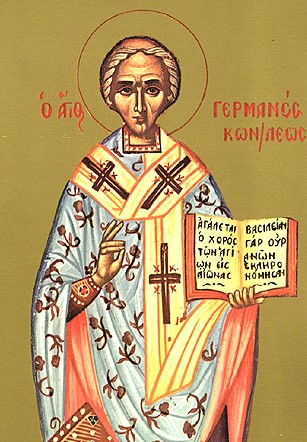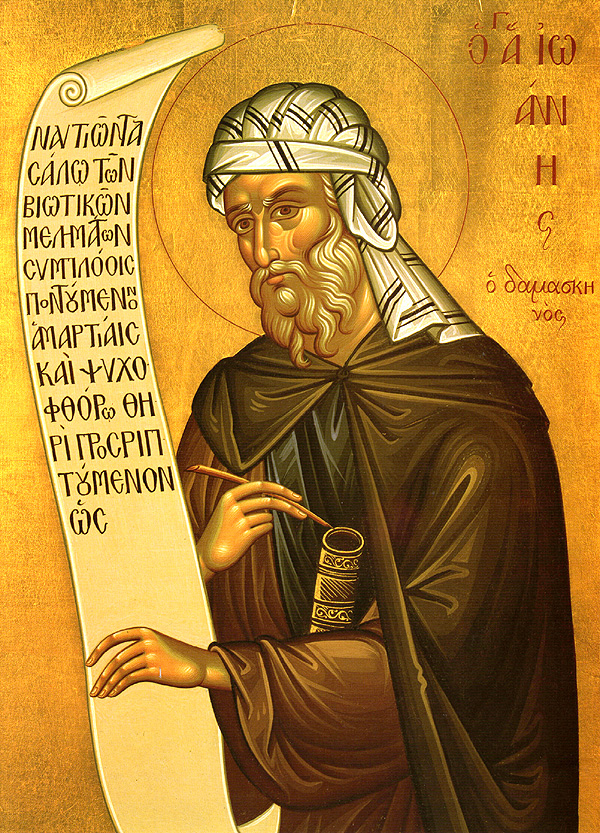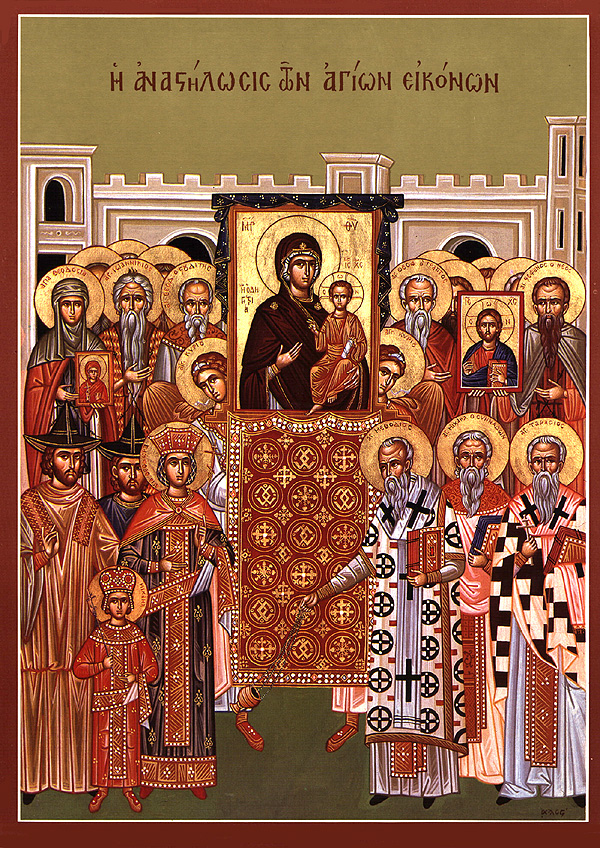Iconoclasm
Emperor Leo III the Isaurian
During the winter of 717–718, an Arab fleet of 1800 vessels put Constantinople under siege. The new emperor, Leo III the Isaurian (r. 717–741), a brilliant military commander from eastern Asia Minor, used the secret weapon called “Greek fire” to drive away the Arabs, thus saving Europe from the advancing Mohammedans.
The new emperor, now a popular hero, initiated a number of military, economic, and administrative reforms. Then he turned his attention to the Church, which he blamed for the various problems of the Empire. He had particular animosity towards the monks, who now numbered at least 100,000—a very large number of men who were lost from military and civil service, and the growing monastic estates were free from taxation.
When a dispute about the icons, raised by certain bishops from the eastern provinces of Asia Minor, came to his attention, he took the opportunity to exert his own authority over the Church. Beginning in 726, he issued a number of edicts against the icons and their veneration, for in his opinion they were being worshiped as idols.
It was true that various superstitious abuses had arisen involving icons, and there had always been a certain hesitation about them among a minority in the Church who feared the possibility of idolatry. Since the main thrust of Iconoclasm originated in the eastern provinces of Asia Minor, the part of the Empire closest to the Islamic lands, it is probable that Islam, with its condemnation of pictorial religious art, played a role in influencing the views of the Iconoclasts. And for Scriptural support, the Iconoclasts invoked the second of the Ten Commandments: “Thou shalt not make unto thee any graven image” (Ex 20.4).
The majority in the Church, including many of the great Church Fathers, defended the icons as important aids in personal and corporate spiritual life and worship. As noted above, the Council of Trullo in 692 affirmed the propriety of making and venerating icons of Christ. Nevertheless, Emperor Leo pressed on with his program, despite the willingness of many Christians, especially the monks, to shed their blood in defense of the holy images—and despite the indignant reaction of the Church of Rome, which held a council in 731 that condemned and excommunicated the Iconoclasts (literally, “icon-breakers”).

The defenders of the icons, called Iconodules, were led theologically by Saint Germanus, Patriarch of Constantinople (r. 715–730), who was deposed and exiled when he refused to reject the icons, and by Saint John of Damascus (c. 652–749), a great Church Father who extensively quoted previous Fathers in his famous three treatises in defense of the icons, called On the Holy Images. Saint John was able to speak out relatively freely because he was a monk at the Saint Sabas Monastery in Palestine, a land which had been under the control of the Arabs since 636.
Saint John’s main point is that icons of Christ are entirely appropriate since He, the Son of God, really took human flesh and became man. Thus He can be depicted in that flesh. Saint John states,
In former times God, who is without form or body, could never be depicted. But now when God is seen in the flesh conversing with men, I make an image of the God whom I see. I do not worship matter; I worship the Creator of matter who became matter for my sake, who willed to take His abode in matter, who worked out my salvation through matter. Never will I cease honoring [proskynesis = veneration] the matter which wrought my salvation! (On the Holy Images 1.16).

Saint John carefully distinguishes the relative worship, or—much better to say—the veneration (proskynesis) of the icons, the relics of the saints, the Cross, and the Gospel Book, from the highest degree of worship (latreia) due to God alone. And he reminds the Iconoclasts that the same Lord Who commanded “Thou shalt not make unto thee any graven image” (Ex 20.4) so that such a thing would not be worshiped as an idol (Ex 20.5), also commanded that golden cherubim be crafted to hover over the mercy seat in the Tabernacle (Ex 25.18–22). He also points out that according to the Holy Scriptures, Christ is the “image (literally, icon—eikon) of God” (2 Cor 4.4; also Col 1.15).
Emperor Leo perhaps was eventually influenced by the strong popular reaction against his Iconoclastic decrees, for he did not actively persecute the Iconodules in the later years of his reign. For political reasons, he allowed freedom to the Christians in southern Italy, then still under Byzantine control, to venerate the icons. Many Iconodules fled there in this era, where considerable Byzantine influence is evident to this day.
Emperor Constantine V Copronymos
Emperor Leo’s son and successor, Emperor Constantine V Copronymos (r. 741–775), took a much harsher stance against the icons and their defenders. Even daring to call himself “emperor and priest,” he was more determined than his father had been to subject the Church to his own will. He styled himself a theologian, and attempted to present a well-reasoned, theologically informed case against the icons. He systematically pursued the official policy of Iconoclasm, removing Iconodules from the episcopacy and replacing them with Iconoclasts.
By 753 he felt ready to move definitively at the highest theological and ecclesiastical level. He called a major Church council which he intended to be the Seventh Ecumenical Council. It met the next year in Constantinople, with 338 bishops in attendance—all of whom were under severe imperial pressure to support the Iconoclastic position.
This Iconoclastic Council of 754 condemned the making and venerating of icons. The bishops at the council declared that they were only following the first six Ecumenical Councils, and indeed, all of Holy Tradition—though quite obviously, they were ignoring Canon 82 promulgated by the Quinisext Council in 692.
In trying to make sophisticated theological arguments, the Iconoclastic Council asserted that icons of Christ either are Monophysitic (mixing the divine and human natures, if their defenders say that Christ Himself is depicted in the icons), or Nestorian (separating Christ’s divine nature from His humanity, if it is stated that only His human nature and not His divine nature is being depicted). In conclusion, the council decreed:
Supported by the Holy Scriptures and the Fathers, we declare unanimously, in the name of the Holy Trinity, that there shall be rejected and removed and cursed out of the Christian Church every likeness which is made out of any material and color whatever by the evil art of painters.
It seems that the chief Christological mistake of this council was that it did not properly distinguish between Christ’s divine nature and His (divine) hypostasis. The icons do depict Christ in His human nature, which He has forever joined inseparably to Himself through union with His divine Person or hypostasis. But of course the icons do not depict His divine nature, which forever remains invisible and uncircumscribable.
The theology expressed at this false council also reflects a dualistic streak haunting Christianity in various ways through the centuries, which denies the full goodness of the material order. In addition to calling iconography “the evil art of painters,” this council also labeled it “a dead art, discovered by the heathen,” and “lifeless pictures with material colors which are of no value.” It said Christians are forbidden “to imitate the customs of the demon-worshippers, and to insult the saints . . . by common dead matter.” And it slanderously accused the iconographer of working “from sinful love of gain . . . with his polluted hands.”
Such a negative view of matter cannot help but undermine a proper understanding of the Incarnation of Christ—and hence, of the very nature and scope of salvation itself. As Bishop Kallistos Ware observes,
The Iconoclasts, by repudiating all representations of God, failed to take full account of the Incarnation. They fell, as so many puritans have done, into a kind of dualism. Regarding matter as a defilement, they wanted a religion freed from all contact with what is material; for they thought that what is spiritual must be non-material. But this is to betray the Incarnation, by allowing no place to Christ’s humanity, to His body; it is to forget that our body as well as our soul must be saved and transfigured. The Iconoclast controversy is thus closely linked to the earlier disputes about Christ’s person. It was not merely a controversy about religious art, but about the Incarnation, about human salvation, about the salvation of the entire material cosmos.
Many in the Church refused to accept the decisions of the Iconoclastic Council. As a result, they were viciously persecuted by the imperial authorities. The time between 762 and 775 is known as the “decade of blood” since hundreds of Christians, mostly monks, were imprisoned, tortured, and even killed for harboring and honoring icons.
The Seventh Ecumenical Council

In 787, during the reign of the Empress Irene (r. 780–802), who favored icon veneration, a major council was held in Nicea which defined the legitimate and proper use of icons in the Church. This council, the true Seventh Ecumenical Council, followed the theology of Saint John of Damascus in affirming the propriety of the icons. It proclaimed that icons “should be set forth” in the churches and in private homes and in public places.
In the 22 canons promulgated by this council, relics are stipulated to be in every church (Canon 7); all monasteries are to be restored (Canon 13); mixed monasteries (with a men’s part and a women’s part on the same property) are allowed to continue to exist, but no new ones may be established (Canon 20); and the buying of church office (simony) is condemned (Canon 5).
In celebrating the decisions of this council, Father Alexander Schmemann declares:
Everything in the world and the world itself has taken on a new meaning in the Incarnation of God. Everything has become open to sanctification; matter itself has become a channel of the grace of the Holy Spirit.
From the proclamation of the Seventh Ecumenical Council
To make our confession short, we keep unchanged all the ecclesiastical traditions handed down to us, whether in writing or verbally, one of which is the making of pictorial representations, in conformity with the history of the preaching of the Gospel, a tradition useful in many respects, but especially in this, that the Incarnation of the Word of God is shown forth as real and not merely illusory. . . .
We, therefore, following the royal pathway and the divinely inspired authority of our Holy Fathers and the traditions of the Catholic Church (for, as we all know, the Holy Spirit dwells in her), define with all certitude and accuracy that just as the figure of the precious and life-giving Cross, so also the venerable and holy images, in painting and mosaics, as well as in other appropriate materials, should be set forth in the holy churches of God, and on the sacred vessels, and on the vestments and on hangings, and in pictures both in houses and in public places. These holy images should depict the figure of our Lord God and Savior Jesus Christ, and of our spotless Lady, the Mother of God, and of the honorable Angels and of all Saints, and of all pious people. For by so much more frequently as they are seen in artistic representation, by so much more readily are men lifted up to the memory of their prototypes, and to a longing after them. And to these should be given due salutation and honorable reverence (aspasmon kai timetiken proskynesis), but not indeed that true worship of faith (latreia) which pertains alone to the divine nature. . . . For the honor which is paid to the image passes on to that which the image represents, and he who reveres the image reveres in it the subject [hypostasis] represented. . . . Anathema to those who do not venerate the holy and venerable images. Anathema to those who call the sacred images idols.
This Christological definition of icons and their veneration forms the substance of the dogma promulgated by the Seventh Ecumenical Council. The whole Christological dispute, in fact, comes to a climax with this council, which gave it its final ‘cosmic’ meaning.
With rejoicing, the Church acclaimed Empress Irene and her son Constantine as “a new Constantine and a new Helen.” However, Irene did not prove to be a praiseworthy empress for the rest of her rule, for in the year 797 she had her son Constantine blinded so that she might continue to rule by herself. After ruling five more years, she was ousted in a coup d’etat and exiled.
As we will see, the Seventh Ecumenical Council of 787 did not bring Iconoclasm to a permanent end. Tragically, it will arise again in the next century.
